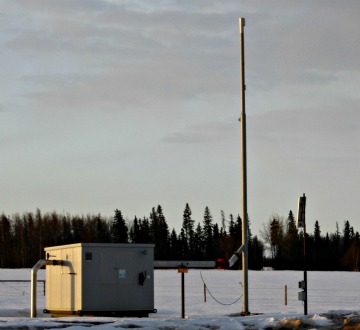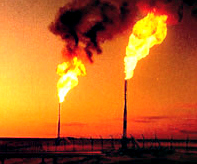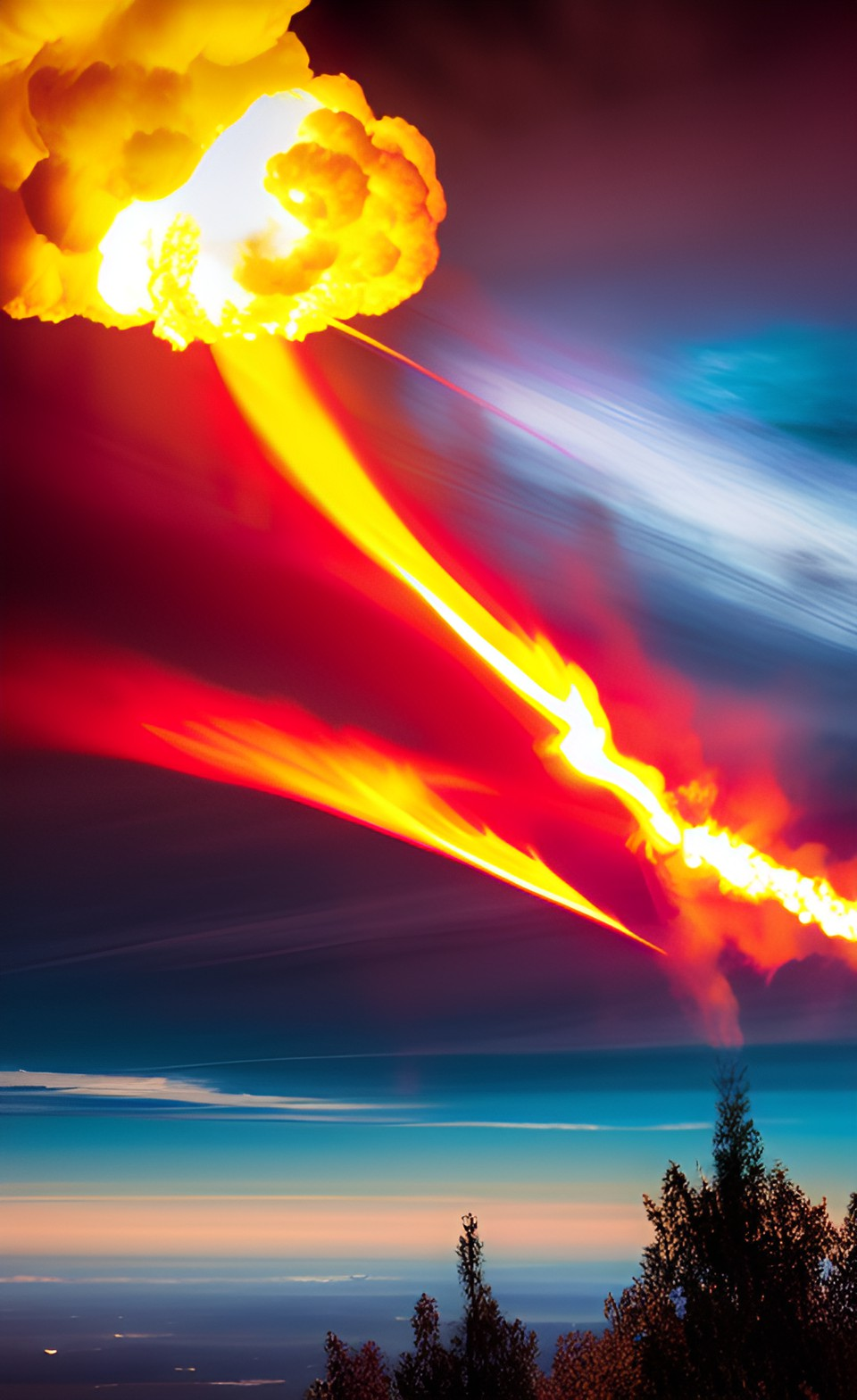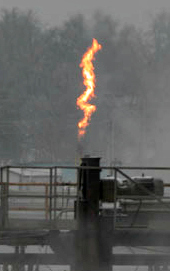- Air Homepage
- Air Quality Testing
- Output So2
Output SO2 from Temporary and Test Flaring
How do facility operators handle output SO2 (sulfur dioxide) from short-term gas releases Whenever a petroleum-industry facility undergoes testing, servicing, cleanup, underbalanced drilling, or blowdowns resulting in temporary flaring, it will need permits from one or more governing agencies.
Temporary flare rules for SO2 - Do you know how much SO2 can be released during a drill test without breaking the law? Unlock the detailed regulatory limits and modelling criteria used by Alberta's AER to approve every hour of temporary gas flaring instead of risking massive fines.
You might need to know what the concerns and regulations are surrounding sulfur dioxide emissions during short-term gas releases, especially in the petroleum industry. Also, consider what the concerns and regulations are surrounding SO2 emissions during short-term gas releases, especially in the petroleum industry.
People worry about sulfur dioxide (SO2) gas emissions from flares because of potential health and environmental effects. Here's why SO2 is a concern, and some things you can do about it:
- SO2 is a highly reactive gas that irritates the respiratory system, especially in people with asthma or chronic obstructive pulmonary disease (COPD). High levels of SO2 can cause respiratory symptoms like coughing, wheezing, shortness of breath, and aggravation of existing respiratory conditions.
- SO2 emissions contribute to air pollution and smog. Forests, crops, and aquatic ecosystems can all be damaged by acid rain. In addition, SO2 can react with other compounds in the atmosphere to form fine particulate matter (PM2.5), which has negative effects on air quality and human health.
- Output SO2 has a strong, pungent odor that can annoy nearby communities. Residents living near flare sites can suffer from the odor.
- Environmental regulations and emissions standards may apply to SO2 emissions from flares. Flares that don't meet these regulations could indicate inadequate control measures and environmental non-compliance.
We need to combine technological innovation, stringent regulations, and public awareness to reduce SO2 emissions from flares. By optimizing flare design, implementing gas recovery systems, and exploring alternative technologies, we can drastically reduce harmful emissions. Regular monitoring and reporting are key to compliance and continuous improvement.
In addition, raising awareness about SO2 emissions can galvanize support for stricter regulations and better industry practices, so collaboration between industry, government, and communities is essential. Find out what strategies and technologies can help us achieve a cleaner, healthier environment with this article. Your engagement is key to air quality management.
SO2 Emissions and Hidden Dangers for Health and Environment
In order to address the concerns associated with SO2 emissions from flares, several measures can be taken:
- Engineers can alter the Design and operation of flares to optimize fuel usage and minimize SO2 release. You can reduce emissions by using more efficient flare systems, maintaining and inspecting flare equipment, and using advanced combustion control technologies.
- Flare gas recovery systems capture and use gas that would otherwise be flared. If you recover the gas, you can use it as energy or send it to a treatment system to reduce emissions.
- In some cases, alternative technologies to flaring, like vapor recovery units (VRUs) or enclosed combustion devices, can reduce SO2 emissions. The technology can make combustion more efficient and controlled, reducing harmful gas emissions.
- Emissions standards need to be enforced and regulated effectively. Governments and regulatory agencies can set SO2 emissions limits and require regular monitoring and reporting. By doing this, flaring operations are in compliance with environmental regulations and emissions are reduced continuously.
- Increasing awareness about SO2 emissions from flares can help generate support for stricter regulations, better industry practices, and cleaner alternatives. Providing information about ongoing efforts to minimize emissions can foster transparency and cooperation.
- Research and development can lead to more efficient and sustainable ways to manage gas flaring. Exploring new ways to reduce SO2 emissions, improve combustion efficiency, and find flaring alternatives are all part of this.
You should use a simple hierarchy for decision-making: avoid flaring or at least reduce it by justifying and minimizing volumes (if possible) or else meet minimum performance requirements (if not). When the gas can burn, raw venting should be banned to reduce odours.
Plants should consider all feasible options for in-line testing. If not, licensees need to keep output SO2 emissions to a minimum and comply with regional air quality standards. As this industry dominates Alberta, Canada, and a significant portion of its participants are in Saskatchewan and British Columbia. we'll reference the governing bodies and regulations there, like the Alberta Ambient Air Quality Objectives (AAAQO).
The testing procedure must follow the Alberta Energy Regulator (AER) Directives 56, 60 (Section 3) and 71 if an emergency is involved. You'll need an Alberta Environment and Protected Areas (AEPA) sour gas plant approval if you want to sweeten gas, even if you don't want to produce SO2.
Flaring durations are capped by the AER based on the type of facility:
- For gas and crude oil sites, 72 hours
- For bitumen sites with 900 m3/day or more, 3 months
- Dry coalbed methane development wells (less than 1 m3 water per day) take 120 hours.
- Dry coalbed methane nondevelopment wells may take 336 hours
- Wet coalbed methane wells should consult the AER or Directive 60
In addition, if any facility needs more time, the board (former nickname for the AER) might allow it if the cleanup isn't done, good flow isn't realized or certain other problems arise.
What is AEPA? Alberta Environment and Protected Areas. Alberta's government is committed to preserving its natural environment. They've created protected areas, like parks and conservation sites, where development is restricted.
Permits for temporary flaring and output SO2
There's a different process for temporary flaring permits. In AER Directive 60, Section 3.3, you'll find Figure 4 helpful.
What do you need a permit for?
- Flaring any gas with at least 5% H2S (hydrogen sulfide) before adding fuel gas
- The volume of gas flared exceeds the site's volume allowance, excluding fuel
Here's how to figure it out. Tier 1 is 600,000 m3 or less, Tier 2 is 400,000 m3 or less, and Tier 3 is 200,000 m3.
The permit request must include information about the activity used to fill out AERflare.xls and AERincin.xls worksheets, a cover letter (listing objections or concerns from the public), Lahee classifications and maps, comparisons of testing options, type of unit, reason for the request, dispersion modeling and an air quality management plan if AAAQO exceedences beyond what's allowed in the Alberta (AER and AEPA) risk-based criteria.
These criteria are used on a national basis by The Canadian Association of Petroleum Producers (CAPP), who represent Canada's upstream oil and gas industry. All Canadians benefit from a competitive, responsible, and sustainable industry.
In Lahee classifications, energy extraction techniques are classified according to the type of energy being extracted, the depth of the extraction process, and the type of machinery used. Energy extraction is safer and more efficient with this classification system.
A similar set of data needs to be provided if the Volume Allowance Threshold needs to be exceeded. Also, send the reason for flaring, the economic analysis, the gas volume justification, and comparisons to similar wells to the Technical Operations Group.
The risk-based criteria allow a few predicted exceedances of the one-hour SO2 AAAQO of 450 g/m3 to be excluded, as long as:
- A refined complex terrain model has been done
- More than 0.1% of the time, ground-level predicted SO2 concentrations don't exceed 900 g/m3
- Predicted SO2 concentrations don't go over 450 g/m3 more than 1% of the time
- There are no measured (actual) exceedances of the AAAQO
Keep completed air dispersion modelling assessments for at least a year. Please email Barry at Calvin Consulting if you need help.
Flaring blanket permits
For simplicity, a site can get a blanket permit for multiple sites if they're close to each other. Permits are for a certain period of time, have physical and flow restrictions, can only be applied to licensed wells, require Excel spreadsheets, and usually require refined dispersion modelling.
Sites are limited to 100,000 m3 and 10 tonnes of sulphur per event, but the group may allow exceptions. They'll also need surface and bottomhole locations and related info, plus a Sour Gas Flaring/Incineration Data Summary Report.
Even with all this, alterations aren't automatically approved. AER also takes air quality at nearby residences into account (Section 3.9 of Directive 60 goes into detail), ways to avoid flaring and/or minimize SO2 output into account.
If the site already has a threshold, the AER allows an additional 200,000 m3, subject to Section 3.3 conditions. However, if the gas has at least 1% H2S, output SO2 dispersion modelling is still required. Gas containing less than 5% H2S can be flared without a permit if:
- Flow data can be defended,
- Don't emit more than 1 tonne of sulphur a day,
- Flare no more than 10,000 m3/day,
- Flare no more than 50,000 m3,
- The output SO2 dispersion modelling is done
- AER Technical Operations Group needs to know this.
When using permanent flares, do licensed facilities need temporary permits? As long as they keep the volumes, H2S content and rates under the licence limits and volume allowance threshold and design flaring operations to comply with AAAQO.
How about emergencies? The Board understands that something unplanned can happen, as outlined in Section 7.
Underbalanced Drilling
Underbalanced drilling is an oil and gas drilling technique that keeps the well pressure below the pressure of the formation being drilled. Drilling operations are more efficient and less likely to damage formations.
When it's safe, companies use underbalanced drilling techniques. The pressure near the drill is lower than the pressure in the formation below. As a result, they can reduce water pollution in the formation, drill faster, conserve mud, and still reduce friction, but they may experience dangerous kicks and blowouts.
In this situation, the AER requires special information, especially if flaring exceeds the Volume Allowance Thresholds. How did the company figure out the flaring rates? How long will it take to drill? How long does it take to test?
For more information on underbalanced drilling, visit AER https://www.aer.ca/rules-and-regulations/directives/directive-036.
What are the performance requirements for well flaring? Section 7 says facilities must use equipment that eliminates output SO2 flaring in accordance with the rules; engineering and design must be done right, by the right professionals.
There are official methods for determining H2S concentrations, including gas chromatography and/or Tutwiler gas analysis (which measures the composition of natural gas and determines its value. By analyzing natural gas, you can determine that different components have different heating values.)
Suspend operations if H2S concentrations are over 5%. You've got to keep excessively rich raw sour gas from escaping into the atmosphere and follow AER Directive 55.
In Section 3.10, facilities must submit reports and information about flaring and testing. It references AER Directive 40 and other documents and bulletins. There are some exceptions to section 3.11 for temporarily setting up a well without SO2 flaring before production starts.
In order to reduce SO2 emissions from flares, we need a multi-faceted approach that includes technological advancements, regulatory measures, public awareness, and collaborative efforts between industry, governments, and communities. Cleaner and healthier environments can be achieved by implementing these actions.
Calvin Consulting Group Ltd. specializes in Alberta AEPA (Formerly ERSD and AENV) and AER applications. Please contact Barry J. Lough at Calvin Consulting Group Ltd. at the email address below if you need help with these matters. Here's a little more about Calvin's services:
Thank you.

How to control gas flare output of SO2.
What are the best practices for handling temporary flaring and the SO2 it produces? In Directive 60, the Alberta Energy Regulator (AER) provides good guidance.
Do you have concerns about air pollution in your area??
Perhaps modelling air pollution will provide the answers to your question.
That is what I do on a full-time basis. Find out if it is necessary for your project.
Have your Say...
on the StuffintheAir facebook page
Other topics listed in these guides:
The Stuff-in-the-Air Site Map
And,
Thank you to my research and writing assistants, ChatGPT and WordTune, as well as Wombo and others for the images.
OpenAI's large-scale language generation model (and others provided by Google and Meta), helped generate this text. As soon as draft language is generated, the author reviews, edits, and revises it to their own liking and is responsible for the content.





New! Comments
Do you like what you see here? Please let us know in the box below.